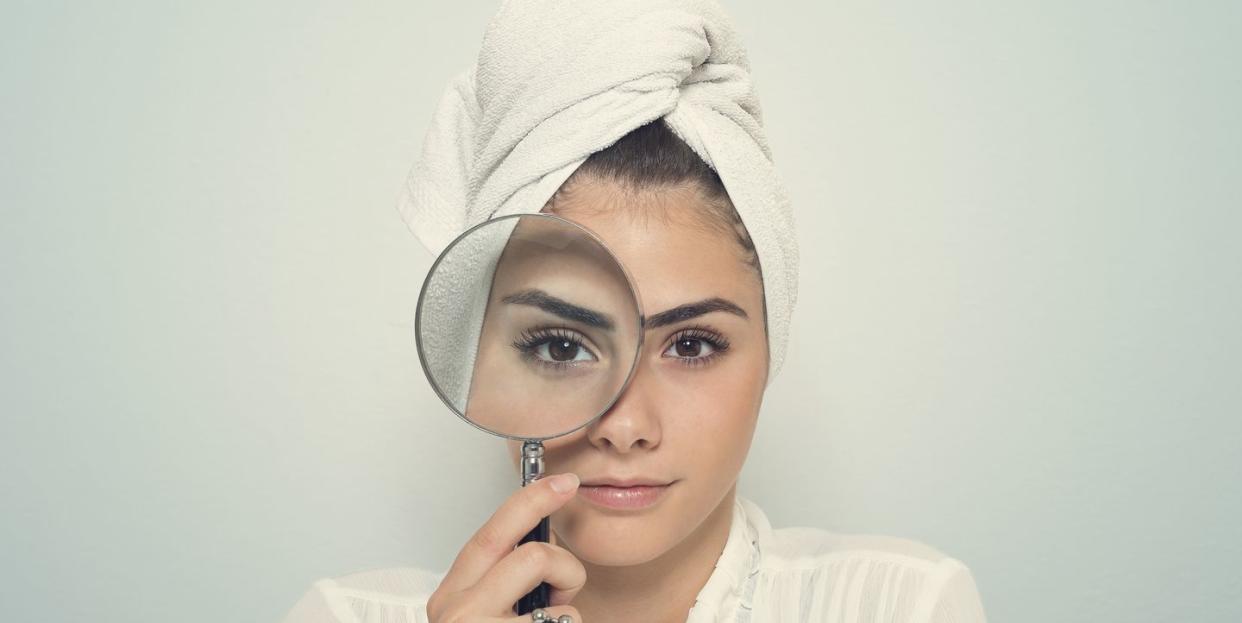How To Be A Skin Detective

Over salt air margaritas at the Ritz-Carlton NoMad, Hao Life co-founder and T&C contributor William Li shares the importance of an underexplored pairing in the inner-outer beauty realm. “In Chinese medicine,” he says, “the skin is known as the external lungs of the body.” At that, we both take a deep breath and a big sip.
Depending on the season and what’s trending on TikTok, it can feel as if our skin is in a game of organ roulette. Bloated and breaking out? Focus on your digestion. Short-fused and skin that’s just as pissed? Could be a stress response. There’s no shortage of clues on the surface of our bodies and theories about what they mean. And this is far from a new approach.
Ancient practices like traditional Chinese medicine and ayurveda have long used external visual clues, like the vitality of our skin, the condition of our tongues, and the whites of our eyes, as guides to possible inner imbalances. Long before we used the word stress, let alone terms like burnout and inflammaging, these systems had remedies to address them all. The Hao Life’s latest supplement, Surface Appeal, is based on the premise that the lungs create qi, the life force that animates the body. It uses tremella mushroom, he shou wu, and astragalus to strengthen the skin-lung connection and increase circulation. “If this qi is strong, blood can flow to the surface, bringing fluids and nutrients to nourish the skin as well as clear pathogenic heat,” says David Melladew, a TCM practitioner who formulates the Hao Life supplements. “But the health of the skin is related not only to the lungs but to all of the vital organs combined.”
In Western medicine, dermatologists are trained to check for signs of outward distress, such as rashes, as a barometer for everything from dietary intolerances to diabetes. “The skin can absolutely be a reflection of what’s going on internally,” says New York dermatologist Amy Wechsler. “There are skin symptoms of certain systemic diseases, like autoimmune disease or even cancer, and sometimes the skin is the first organ to show what’s going on.”
How helpful is it to understand our skin through the prism of another body part? There’s the skin-gut connection, the skin-brain connection, and, thanks to the beauty industry’s love of all things detox, the skin-liver connection. While not every possible coupling is backed by data, there are proven links. “The skin, brain, and spinal cord are formed from the embryonic layer of the cells, so we know there are blood vessels and nerves that connect to one another,” Wechsler says. “It turns out probiotics can be helpful for kids with eczema, but it’s early on.”
While the ties between internal organs and skin exist, the presumptions about how best to treat them together are not concrete. “Some people think that if they change their diet or take probiotics it’s going to affect their skin in a positive way, but I don’t see that clinically,” she says. “Sometimes people spend too much on holistic treatments that aren’t backed up.”
Rather than picking one particular paradigm, perhaps it’s better to go by one of the oldest rules in the book: pay attention to your body’s cues. “My skin almost always tells me very fast if something is off,” says New York City dermatologist Dhaval G. Bhanusali, who has worked with Hailey Bieber and Martha Stewart. While he recommends a doctor’s consultation and bloodwork as the first lines of inquiry, he has learned to adjust his own habits to manage rosacea flare-ups with a compound cream, and he follows a consistent exercise and sleep schedule. “It’s different for every person,” Bhanusali says. “Each thing is a data point, and over time you can determine what is right or wrong for you."
This story appears in the March 2023 issue of Town & Country. SUBSCRIBE NOW
You Might Also Like


